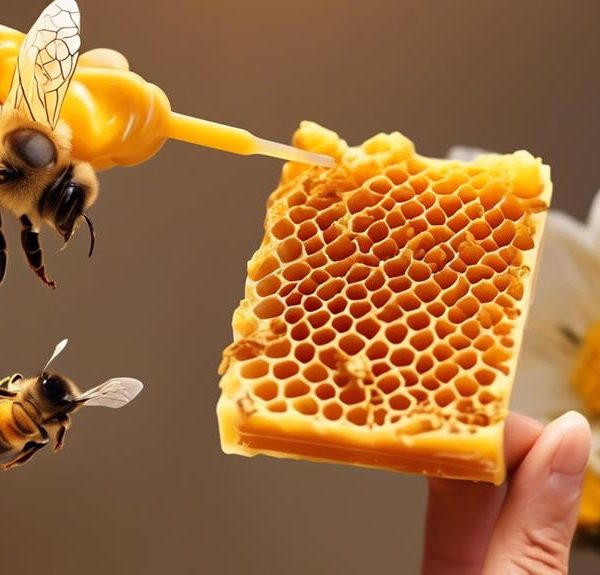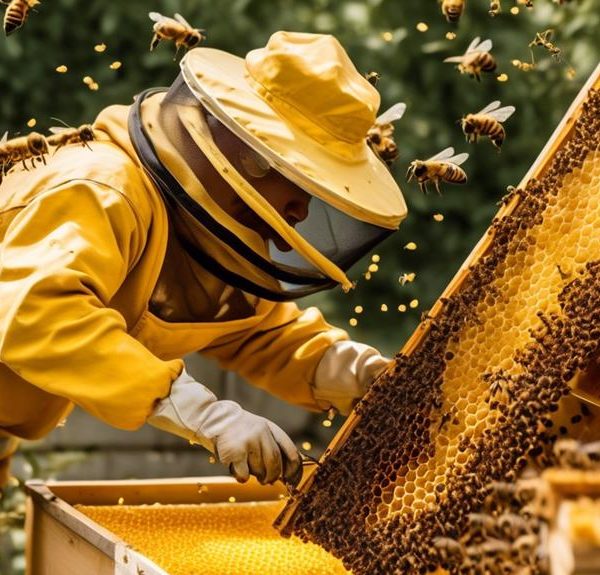Know why beeswax is key in lip balms and how its unique properties provide exceptional care for your lips.
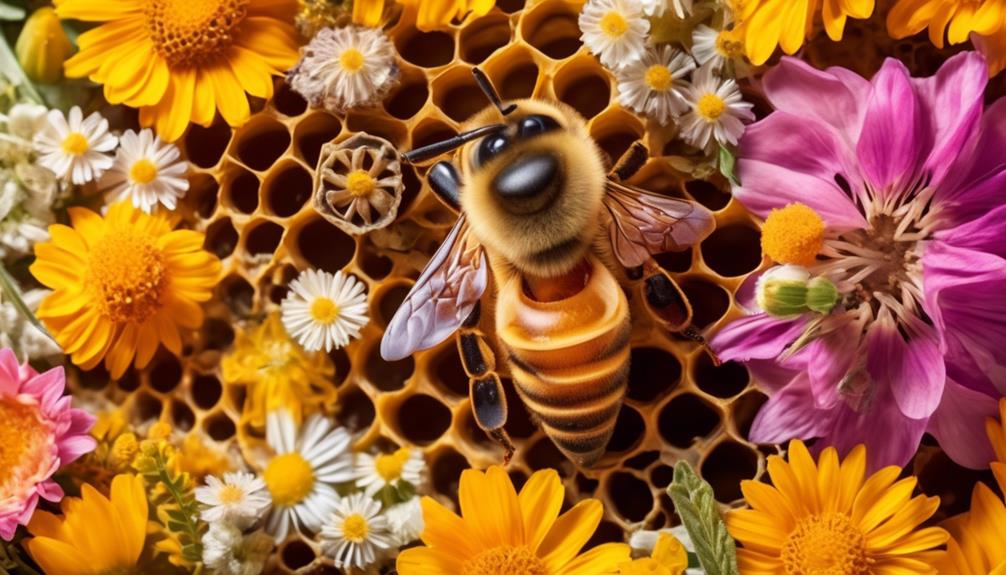
Why Is Beeswax Used in Lip Balm?
Did you know that approximately 95% of commercial lip balms contain beeswax? You've probably used one of these products without giving a second thought to why this natural ingredient is so prevalent.
Well, it's not just a random choice by manufacturers. Beeswax offers unique properties that make it an exceptional ingredient for lip care products. But what exactly are these properties, and how do they benefit your lips?
It's definitely worth your while to explore this fascinating topic further.
Key Takeaways
- Beeswax is composed of esters, hydrocarbons, and fatty acids, which contribute to its hardness, pliability, and stickiness.
- Beeswax has hydrating properties, acting as a natural emollient and locking moisture into the skin. It is particularly beneficial for preventing moisture loss and keeping the lips soft.
- Beeswax provides protection for the lips by forming a thin layer that blocks out external elements like wind, heat, and sunlight. It also has antimicrobial properties that help keep the lips healthy.
- Beeswax is a sustainable resource produced as a byproduct of bees' honey-making process. It is sourced from reputable suppliers who prioritize sustainable beekeeping practices, making it an eco-friendly choice compared to alternatives like petroleum jelly, lanolin, and shea butter.
The Natural Composition of Beeswax
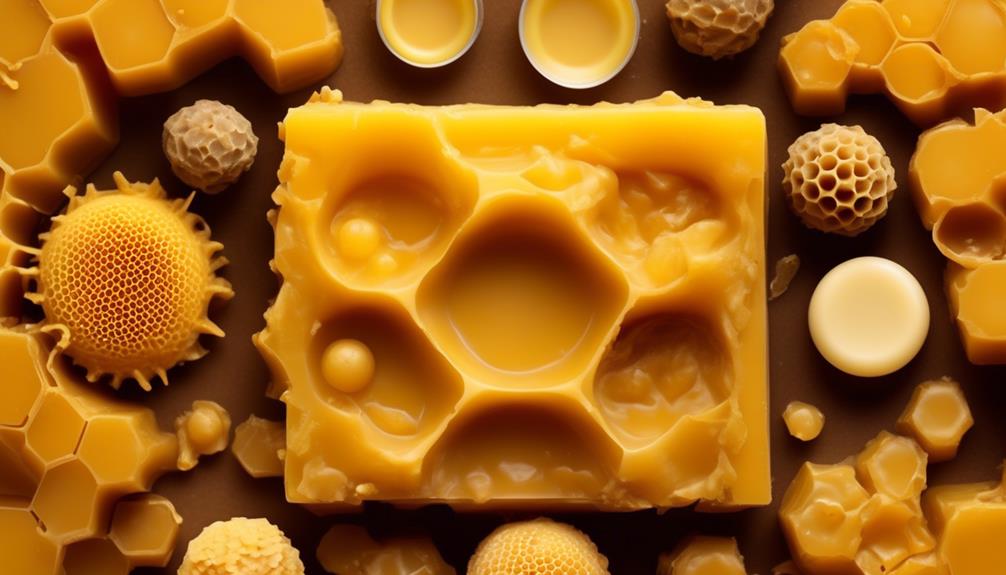
Composed of over 284 different compounds, beeswax presents a complex, naturally occurring substance that contributes key qualities to lip balms. You'd be amazed to know that it mainly contains esters, hydrocarbons, and fatty acids.
Esters, which make up about 70% of beeswax, are formed from the reaction of an acid and an alcohol. They're largely responsible for the wax's hardness, making your lip balm resistant to melting in your pocket.
Hydrocarbons, on the other hand, represent about 14% of beeswax. They serve to enhance the wax's pliability, ensuring your lip balm can be smoothly applied.
The remaining percentage is taken up by free fatty acids, which add to the stickiness of the wax. This quality is crucial for the lip balm to adhere to your lips and provide lasting moisture.
In a nutshell, it's the unique combination of these compounds that gives beeswax its distinctive properties, making it an ideal ingredient in lip balms. Understanding its complex composition not only sheds light on its functionality but also underscores its irreplaceable role in the cosmetic industry.
Beeswax's Hydrating Properties
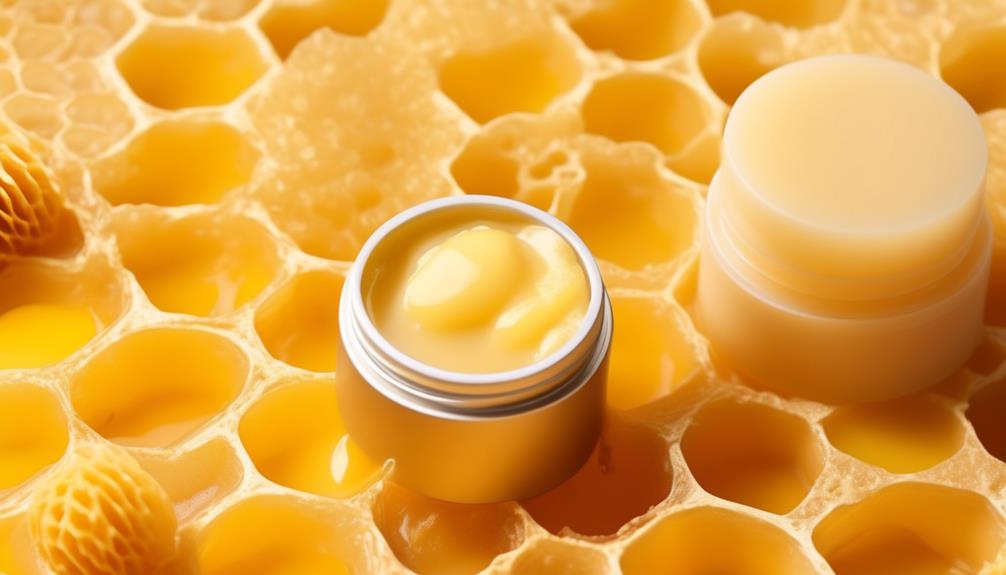
While the unique combination of esters, hydrocarbons, and fatty acids in beeswax lends it its distinctive properties, it's this very composition that also gives it impressive hydrating capabilities. You see, beeswax contains a water-attracting substance known as humectants. These substances draw moisture from the air and lock it into your skin, keeping it hydrated for longer periods.
So, when you apply a lip balm made with beeswax, you're not only protecting your lips with a natural barrier, but you're also actively hydrating them.
Moreover, beeswax is a natural emollient. That means it softens and soothes the skin. When applied to the lips, it creates a thin layer that not only prevents moisture loss but also keeps your lips soft and pliable. This is particularly beneficial in harsh weather conditions, when your lips are most vulnerable to drying and cracking.
How Beeswax Protects Your Lips

Despite its softening and hydrating effects, beeswax's primary role in lip balm is to serve as a protective barrier. This natural substance forms a thin, invisible layer on your lips that helps guard them against external elements. Weather conditions, such as cold wind, dry heat, and harsh sunlight, can rapidly dehydrate your lips, causing them to chap and crack. But when you apply a beeswax-based lip balm, you're essentially equipping your lips with a shield of protection.
Beeswax's barrier doesn't just block out harmful elements; it also locks in moisture. It's a natural humectant, which means it attracts water molecules. So, when you're wearing a beeswax lip balm, you're not just warding off dryness from the outside, you're also retaining and increasing hydration from within.
Moreover, beeswax has antimicrobial properties, adding another layer of protection. It can inhibit the growth of bacteria and fungi, reducing the risk of infections, especially in cracked lips. So, using beeswax on your lips does more than make them feel softer; it actively protects them, keeping them healthy and hydrated.
The Sustainability of Using Beeswax
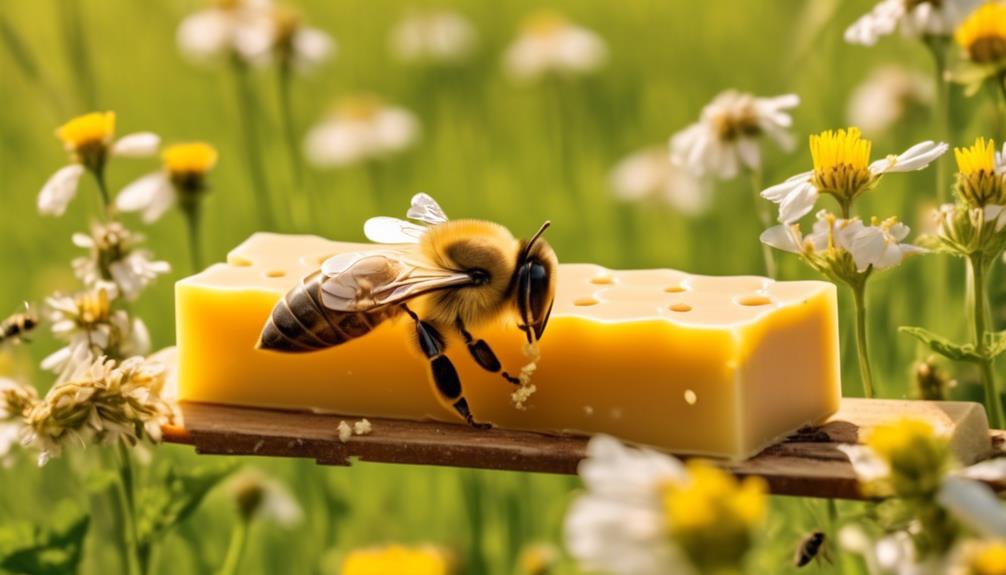
You might be wondering about the environmental impact of using beeswax in lip balms, given its wide use in the cosmetic industry. It turns out, beeswax is a sustainable resource. It's produced by bees as a byproduct of their honey-making process. No bees are harmed during the collection of beeswax, and it doesn't deplete natural resources.
Sustainable beekeeping practices are key to this process. Beekeepers ensure the welfare of bees and the environment by maintaining healthy hives and limiting the use of pesticides. They only take excess wax, leaving enough for the bees to continue their important work of pollination.
The production of beeswax also doesn't contribute significantly to carbon emissions. Bees simply consume honey and excrete wax, a natural process that doesn't require the burning of fossil fuels.
However, it's important to source your beeswax from reputable suppliers who prioritize sustainable beekeeping practices. Not all beeswax is created equal. Some unethical suppliers use harmful pesticides or exploit bees, causing damage to the environment and bee populations.
Comparing Beeswax With Other Ingredients
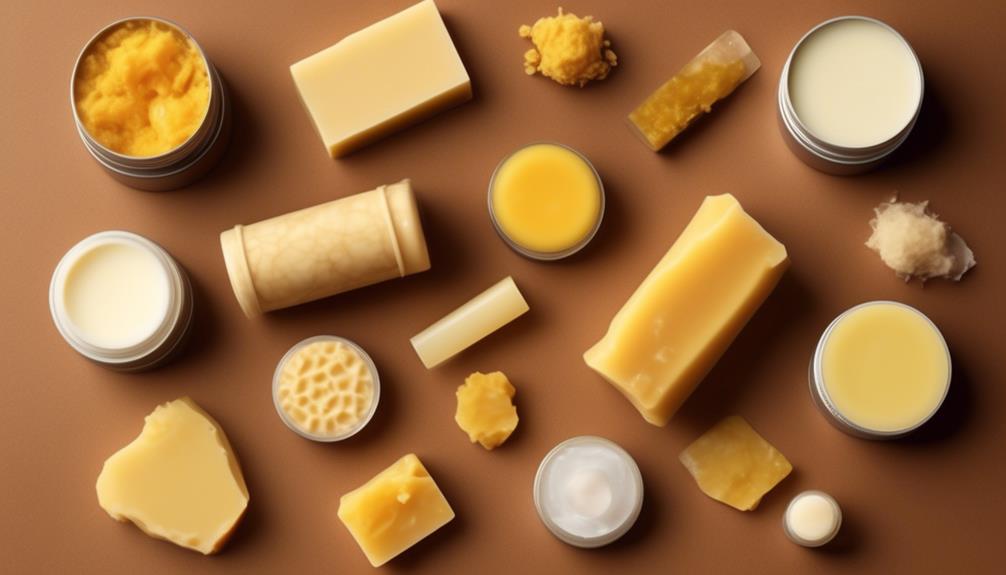
Diving into the comparison between beeswax and other common lip balm ingredients, it's essential to understand their characteristics, source, impact on skin health, and sustainability.
A common alternative to beeswax is petroleum jelly, a byproduct of oil refining. While it's effective at locking in moisture, it doesn't offer the same nourishing benefits as beeswax. It may also be less sustainable and can potentially clog pores, leading to blemishes.
Another common ingredient is lanolin, a wax secreted by wool-bearing animals. While lanolin shares some characteristics with beeswax like its emollient properties, it's not vegan-friendly and some individuals may experience allergic reactions to it.
Then there's shea butter, derived from the nut of the African shea tree. It's a fantastic moisturizer and is impressively sustainable. However, it doesn't hold up as well in high heat situations as beeswax does.
In essence, while other ingredients have their benefits, beeswax stands out due to its unique combination of sustainability, skin health benefits, and resilience under varying temperatures. It's a naturally occurring, eco-friendly ingredient that offers superior moisturizing and protective qualities.
Frequently Asked Questions
Can Beeswax Lip Balm Cause an Allergic Reaction?
Yes, you can have an allergic reaction to beeswax lip balm. It's rare, but some people are sensitive to the compounds in beeswax. If you're experiencing symptoms like redness, swelling, or itching after using the lip balm, you could be having an allergic reaction.
To be safe, stop using the product and consult a healthcare professional. It's always wise to test new skincare products on a small area of skin first.
How Is Beeswax Harvested for Lip Balm Production?
You're curious about how beeswax is harvested for lip balm, aren't you?
Beekeepers carefully remove honeycomb from beehives, ensuring they don't harm the bees. They then scrape off the cap, revealing the honey and wax.
They remove the honey and melt the wax down. The melted wax is strained to remove impurities, and then cooled and hardened.
This pure beeswax is what's used in your lip balm!
Can I Make My Own Lip Balm Using Beeswax at Home?
Absolutely, you can make your own lip balm using beeswax at home. It's quite a simple process.
All you'll need is beeswax, some carrier oil (like coconut or almond oil), and essential oils for flavor.
Melting the beeswax, then mixing it with the oils, then letting it cool in a container will give you a homemade, natural lip balm.
It's a fun, cost-effective way to keep your lips moisturized and healthy.
Are There Any Side Effects Associated With Using Beeswax Lip Balm?
Yes, there can be side effects from using beeswax lip balm, but they're rare.
You may experience an allergic reaction, which can cause symptoms like redness, swelling, or itching on your lips. If you notice these signs, stop using the lip balm immediately and consult a doctor.
But remember, most people use beeswax lip balm without any issues, and it's generally considered safe.
Does Beeswax Lip Balm Have an Expiration Date?
Yes, beeswax lip balm does have an expiration date. You'll typically find it on the packaging. It's important to stick to this date as over time, the balm can lose its effectiveness.
The oils in the balm can also go rancid after a while. If you notice any changes in smell, texture, or color, it's best to throw it out. Remember, it's always better to be safe than sorry with any personal care product.
Conclusion
So, why is beeswax in your lip balm? Its natural composition offers a safe and effective way to moisturize your lips. Beeswax provides a protective barrier, sealing in moisture without clogging pores.
It's also a sustainable ingredient, making it an eco-friendly choice. Compared to other ingredients, beeswax stands out for its unique benefits.
Ultimately, beeswax is a little ingredient that makes a big difference in the health and hydration of your lips.

